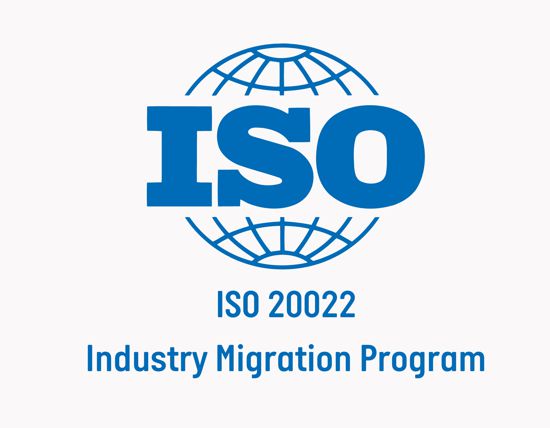ISO 20022: An Unprecedented Change

11 May 2021
by Rob Magee, Program Director, ISO 20022 Industry Migration
The International Organization for Standardization (ISO) describes ISO 20022 as “a multi part international standard”, “a common platform for the development of messages” and “a modelling methodology to capture in a syntax-independent way financial business areas, business transactions and associated message flows”.
Perhaps then, not surprisingly, by their own admission “While many people in the financial services industry have heard about ISO 20022, few truly understand what it is about and what is so great about it.”
What is ISO 20022 and why change?
ISO 20022 defines a common language for financial information that is being adopted around the globe. Although the standard also covers messaging in other business domains, like securities and foreign exchange, AusPayNet’s focus is on payments.
In jurisdictions all over the world, market infrastructure operators (typically central banks, like the Reserve Bank of Australia here) are adopting the ISO 20022 standard for their high value clearing and settlement systems. In Australia, that means the RBA’s Real Time Gross Settlement (RTGS) System, known as RITS (Reserve Bank Information Transfer System) and AusPayNet’s High Value Clearing System (HVCS).
This is a once-in-a-generation transformation, impacting nearly 50 banks operating in Australia, and hundreds or even thousands of systems over the next two to three years and beyond. To really leverage the possibilities of this new message format, banks will also need to source, store and process a lot of data they don’t currently have or deal with. So of course, this begs the question “why go to all that trouble?”
A key challenge for the payments industry is a proliferation of formats and standards, meaning payment networks and systems do not integrate well with each other.
Driven by the ‘digitisation of everything’, consumers are becoming increasingly used to, and expect, fast and seamless interactions in their day to day personal and business lives.
The ISO 20022 standard addresses both this challenge and this need.
Opportunities and benefits of ISO 20022
Compared to the older formats used today, ISO 20022 payment messages can carry so much more rich, enhanced, and structured data. Good examples are structured remittance information and structured name and address information to identify the parties in the payment chain.
This rich data creates a range of opportunities and benefits that can be grouped in three areas:
- Process automation
- Interoperability
- Customer experience
1. Process automation
A typical example is the automation of payment reconciliation. The common language used to describe this information in a structured way allows for processing at increased speed and reduced cost. Barriers to straight through processing, like manual intervention and manual reconciliation, are removed.
Payment messages have many touch points within banks – from risk and accounting systems, to reporting systems and customer facing channels – and there are opportunities for automation throughout. Opportunities to combat financial crime are also increased. Screening payment instructions is a regulatory requirement in a range of situations (think Anti-Money Laundering/Counter-Terrorism Financing, aka AML/CTF) and enhanced message content will reduce false positives and improve accuracy of these tasks overall.
Richer, more comprehensive, structured data means possibilities for faster and more accurate processing in all of these areas.
2. Interoperability
Interoperability is achieved through payment systems and networks speaking the same language. It removes overheads associated with translation and conversion. Payments can travel more easily between payment networks around the globe, increasing reach and overcoming the fragmentation found between systems and networks based on older formats. By ensuring systems are standardised, new payments technologies that are constantly in development can remain efficiently connected.
3. Customer experience
By driving the cost savings and efficiencies related to automation and interoperability, banks can shift their focus to value-add activities, data driven services, and things like liquidity forecasting and risk modelling. The ISO 20022 standard also includes customer messages – like payment initiation, status and statements – so banks will be able to create seamless experiences for customers whose payments are embedded in the business processes they support.
The new message standard also creates the possibility for richer content to flow all the way from the initiator of a payment to the ultimate recipient, via the banks in the payment chain.
Bringing everyone along on the migration journey
AusPayNet is leading the industry migration program and Australia’s part in this generational change to the global payments landscape.
We have been working closely with industry participants for almost a year, and specifications for several ISO 20022 messages are already available to industry participants. We are keen to now engage with system vendors and other industry stakeholders and invite those wanting further information or access to our message usage guidelines to contact us at iso20022@auspaynet.com.au.
Additionally, some organisations, like the ATO (for tax and SuperStream) and Department of Community Services (for emergency payments), would like to see consistent use of certain payment purpose codes in ISO 20022 messages. This can enable processing to be tailored accordingly, for example prioritsation of emergency government payments. If you have input in this area please contact us at iso20022@auspaynet.com.au.
Other useful information can be found using the following links:
- ISO’s web site for the ISO 20022 standard: https://www.iso20022.org/
- A SWIFT video describing an example use case: https://www.youtube.com/watch?v=2c0c-_E05fE
Please check our quarterly newsletter, Migration Monitor, at the link below to follow our progress.


